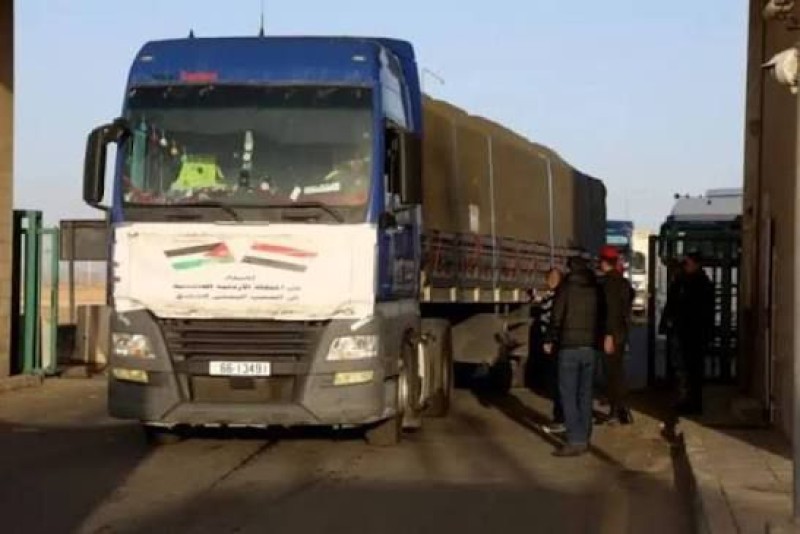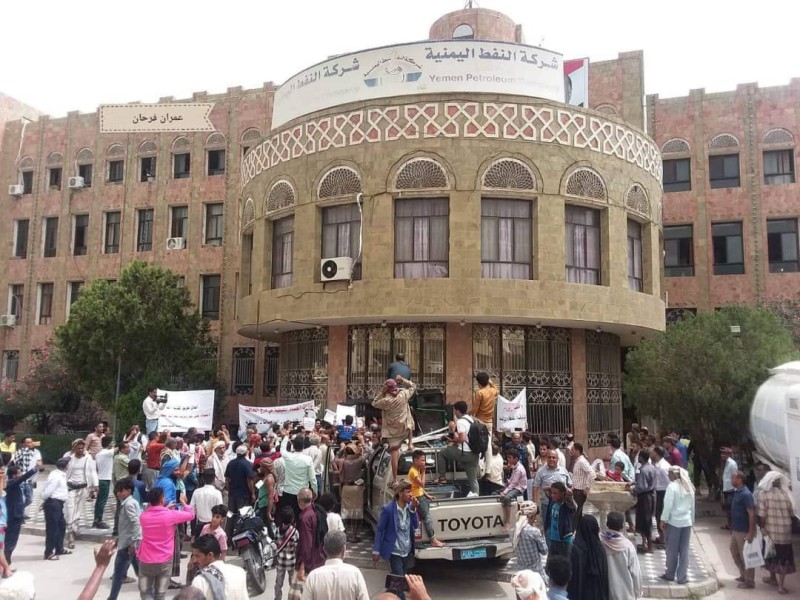Yemen Humanitarian Update


HIGHLIGHTS
UN and healthcare workers join efforts to reach over one million children with life-saving polio immunization
P 01
Enhancing AAP in Yemen’s largest IDP site: a WASH case study
P 04
OCHA’s Director of Operations and Advocacy visits Yemen to hear from communities
P 05
Transitional Shelters: A Vital Solution for Yemen’s IDP Communities
P 06
UN AND HEALTHCARE WORKERS JOIN EFFORTS TO REACH OVER ONE MILLION CHILDREN WITH LIFE-SAVING POLIO IMMUNIZATION
Forty-year-old Nadeem Muhammad Saeed looked on with relief as his daughter received two drops of the novel oral polio vaccine (nOPV2) at home.
"I was worried about her getting sick. But after the vaccination team came to our house, I felt a huge weight lifted. Knowing her immunity is stronger gives me a great peace of mind."
In late February, Yemen witnessed a four-day polio immunization campaign across 120 districts in 12 governorates of Yemen. In less than a week, more than 1.29 million children aged under five years received the oral vaccine.
The campaign was the result of joint efforts between Yemen’s Ministry of Public Health and Population (MoPHP), the United Nations Children’s Fund (UNICEF) and the World Health Organization (WHO). Overall, the campaign
has been a success, with coverage ranging from 89% to over 100%, or above the original target in some locations. The campaign is the latest step in the fight against polio in Yemen, confirmed back in the country in 2020 in an outbreak of vaccine- derived poliovirus type 1 (cVDPV1). cVDPV1 has been inactive since January 2021; however, the ongoing outbreak of circulating vaccine- derived poliovirus type 2 (cVDPV2) emerged thereafter, in November 2021.
In 2022 and 2023, WHO supported the implementation of 4 vaccination campaigns using trivalent oral polio vaccine (tOPV) in 12 governorates across Yemen. In total, 6,925,255 doses of tOPV were delivered through the 4 campaigns. Rising levels of vaccine hesitancy were observed, however, resulting in missed children.
This round, 882 mobile vaccination teams and 845 vaccination teams working from health facilities collectively reached 1.29 million children.
Wide-scale immunization campaigns aim to boost population immunity in a context of increased risk. Girls and boys aged under five years received an extra boost of protection, on top of their regularly scheduled immunizations and the supplementary immunization campaigns that took place in 2022 and 2023. A second round of the campaign will happen after Ramadan.
Polio outbreak in Yemen
Nine years of conflict have led to devastating outbreaks of vaccine-preventable diseases like polio, which disproportionately affect children.
From 2021 to 2023, Yemen reported 237 variant poliovirus type 2 cases – both circulating vaccine-derived poliovirus type 2 (cVDPV2) and vaccine-derived poliovirus (VDPV). 90 per cent of the affected children were aged under 5 years, while 10 per cent of cases were older children.
Current testing of wastewater confirms the presence of poliovirus in communities.
Such outbreaks are known to emerge in contexts of chronic under-immunization. In fact, one in four Yemeni children has not received all their recommended vaccinations on the national routine immunization schedule. Nearly one in five (17 per cent) are “zero-dose” children, meaning they have not had a single dose of the diphtheria-tetanus-pertussis vaccine. 2023 also saw a massive outbreak of measles and rubella across Yemen, reaching over 49,000 cases.
Challenges to outbreak control
Effective control of the outbreak of vaccine- preventable diseases has been challenging due to extremely limited public health infrastructure and services, limited water availability, and growing levels of vaccine hesitancy. Yemen’s health system is incredibly fragile. According to the 2024 Humanitarian Needs Overview, only 55 per cent of health facilities are operational. This, combined with sub-optimal immunity against vaccine-preventable diseases, increases the likelihood of outbreaks of such diseases.
Dangerous mis-information and dis-information about vaccines continue to spread fear in parents’ minds and breed mistrust of the healthcare community.
Moreover, many vulnerable children reside in Yemen′s northern governorates as outbreak response vaccinations are yet to be approved. This is leading to continued multiple outbreaks. In the southern governorates where campaigns are conducted, there is a need to reach more children who are vulnerable, as they are living in refusal areas. As a result of these challenges, children continue to be paralysed by polio and sickened by other preventable—and potentially fatal—diseases.
Despite challenges, teams are driving the polio eradication efforts forward
In the fight against polio, together, humanitarian and institutional health workers are working to extend protection against the vaccine-preventable disease in the most at- risk communities, with a focus on reaching unvaccinated and zero-dose children to reduce the spread of the disease.
There is no cure for polio, but it can easily be prevented. Its circulation can be stopped in Yemen by vaccinating all children with oral polio vaccine. Health agencies and their partners are committed to respond to polio outbreaks and save lives.

Hodeidah — Two members of the Iranian-backed Houthi militia were killed and five others wounded in a landmine explosion near Hodeidah airport…

Aden —A humanitarian convoy from Jordan, consisting of 13 trucks loaded with relief supplies, has arrived in Yemen to support communities aff…

Taiz — Administrative operations at the Taiz Governorate building have resumed following several days of closure caused by an open sit-in sta…